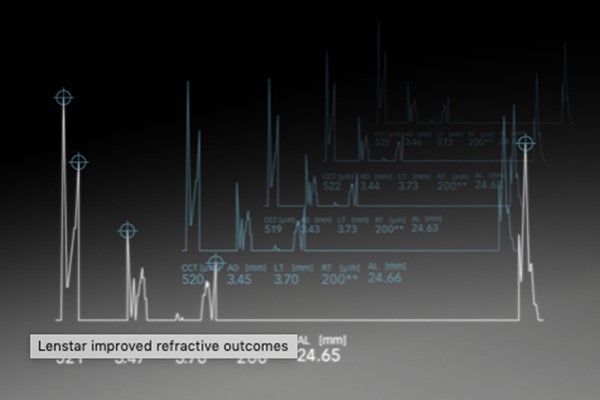Artificial intelligence in eye surgery

November 24, 2020
Cataract surgery is the most frequently performed operation in the UK. It can now be performed through a 2mm incision in the cornea and this heals without the need for stitches. The cloudy lens is removed by being broken up using an ultrasonic procedure called phacoemulsification.
An artificial intraocular lens (IOL) enters the eye through this 2mm incision and once it enters the eye, it unfolds and is held in place by two legs or ‘haptics.’ The lenses have improved in their design over decades and once implanted, they can remain in place for life.
Most recently, there has been an important development in how we select the power of the IOL we implant. This is particularly important as unlike with a pair of glasses or contact lenses, the lens that goes in is difficult to change once in position. The calculations we use to select the power of IOL we need depend on the measurements or ‘biometry.’ The better our biometry, the better our postoperative results.
The latest biometer (LENSTAR) uses optical coherence tomography (OCT) to measure the structures inside the eye to a high degree of accuracy. Additionally, a number of additional parameters can also be measured such as the thickness of the natural lens. The additional measurements helps predict where the new IOL will sit once inside the eye and this further improves postoperative visual outcome.

The measurements are traditionally put into an algebraic formula, which was designed to predict which lens would provide the best vision. A number of formulae existed, each of which would have a calculation bias in favour of particular types of eyes.
Recently, Dr Warren-Hill (Arizona, USA) has developed a method for IOL power selection using pattern recognition and sophisticated data interpolation based in artificial intelligence. Dr Hill’s Hill-RBF formula, combined with better biometric measurements has led to better outcomes after cataract surgery in terms of predicted refractive outcome after the surgery.
Mr Modi has been using the LENSTAR in his practice for several years and found a great improvement from the combination of better accuracy in biometry and newer generation of artificial intelligence-led IOL power selection to give the best visual outcomes.
